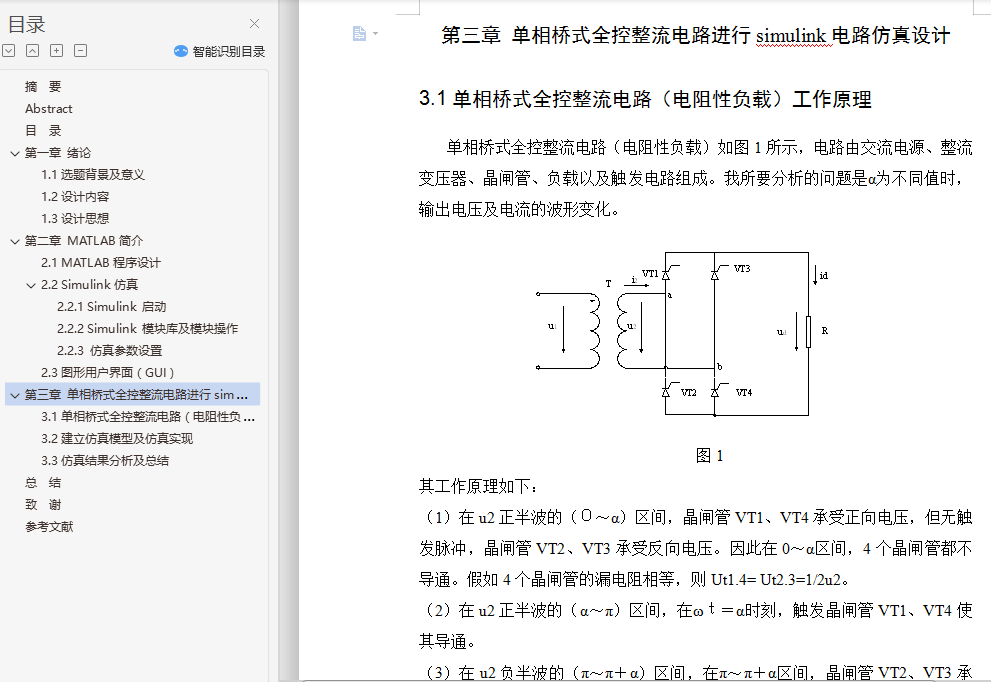摘 要
用MATLAB/Simulink来设计《电路原理》给设计者开辟了一种全新的设计方法的可能性,使用Simulink模块进行以代替传统的原理图进行《电路原理》的分析可以使初学者能更形象直观地看到电路运行时的波形变化,可以大大提高学习效率。故利用MATLAB仿真软件在日常的数字电路的研究学习中有着越来越重要的作用。用MATLAB/Simulink来设计《电路原理》给设计者开辟了一种全新的设计方法的可能性。使用Simulink模块进行设计、调试、和仿真,以代替传统的原理图进行《电路原理》的分析。使初学者能更形象直观地看到电路运行时的波形变化,可以大大提高学习效率。利用MATLAB 软件,通过设计图形用户界面(GUI),说明Matlab功能强大、简单实用、调节容易、可视性好,可大大提高计算效率,缩短编程时间,是一种简便实用的计算工具,可成功地应用于信号处理中,在教学和研究等领域具有广泛的应用前景和一定的推广价值。
关键词:MATLAB;Simulink、;《电路原理》;GUI
Abstract
The use of MATLAB/Simulink to design the circuit principle opens up the possibility of a new design method for designers. Using the Simulink module to substitute the traditional schematic diagram for the analysis of the circuit principle can make the beginners see the waveform changes of the circuit running more vividly and intuitively, and can greatly improve the learning efficiency. Therefore, MATLAB simulation software plays a more and more important role in the research and study of daily digital circuits. Using MATLAB/Simulink to design the circuit principle opens up the possibility of a new design method for designers. Sex. The Simulink module is used to design, debug and simulate the circuit principle instead of the traditional schematic diagram. So that beginners can more vividly see the circuit operating waveform changes, can greatly improve learning efficiency. Using MATLAB software, through the design of graphical user interface (GUI), it is shown that Matlab has powerful function, simple and practical, easy adjustment, good visibility, which can greatly improve the computing efficiency and shorten the programming time. It is a simple and practical computing tool. It can be successfully used in signal processing and has a wide range of application prospects in teaching and research fields. A certain value of promotion.
Key words:MATLAB;Simulin,;GUI
目 录
摘 要 I
Abstract II
第一章 绪论 1
1.1选题背景及意义 1
1.2设计内容 1
1.3设计思想 2
第二章 MATLAB简介 3
2.1 MATLAB程序设计 3
2.2 Simulink仿真 4
2.2.1 Simulink 启动 4
2.2.2 Simulink 模块库及模块操作 4
2.2.3 仿真参数设置 6
2.3图形用户界面(GUI) 7
第三章 单相桥式全控整流电路进行simulink电路仿真设计 8
3.1单相桥式全控整流电路(电阻性负载)工作原理 8
3.2建立仿真模型及仿真实现 9
3.3仿真结果分析及总结 16
总 结 17
致 谢 18
参考文献 19






